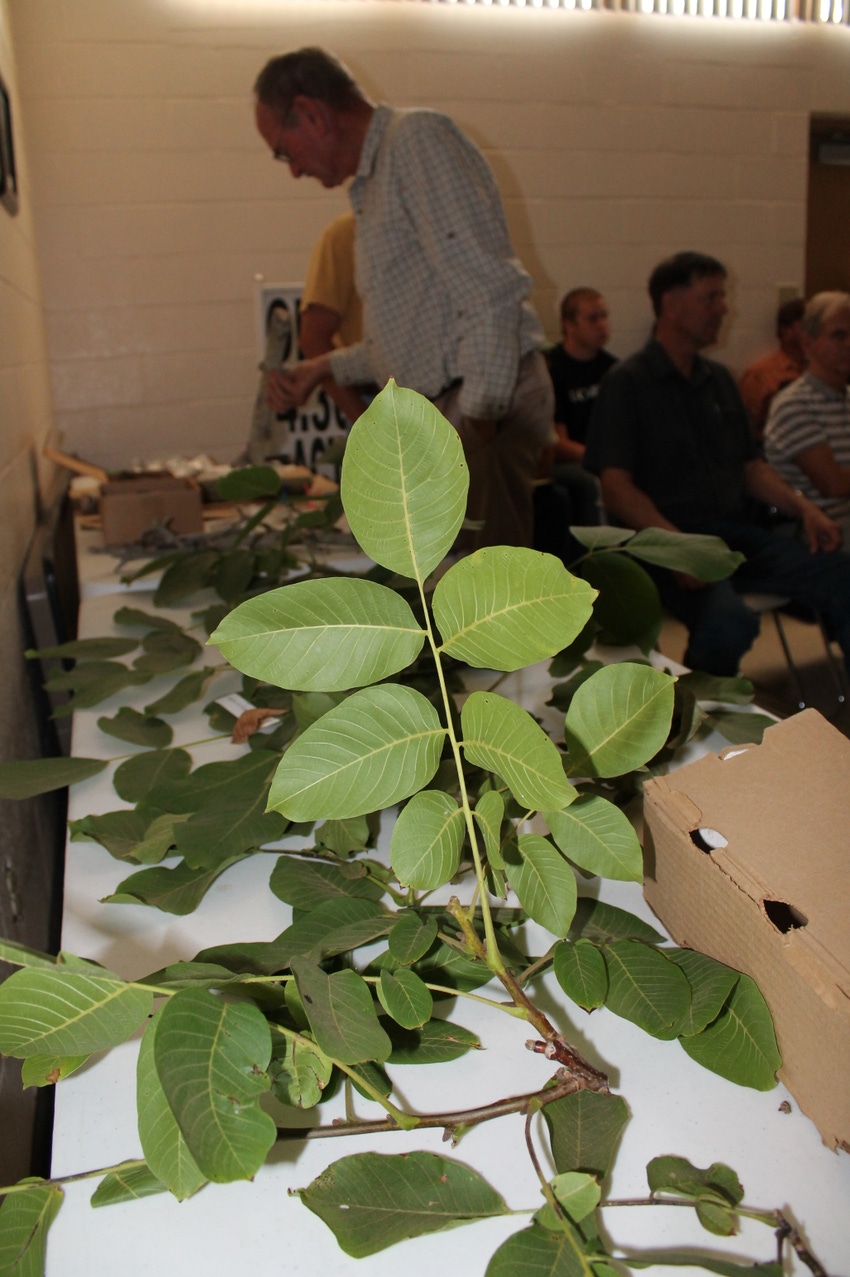October 20, 2014

As the California walnut harvest wraps up, some growers may be getting ready for pruning or hedging. Growers may wonder if anything needs to change about pruning or hedging practices given the recent spread of Botryosphaeria (Bot).
UCCE Farm Advisor Katherine Pope asked Themis Michailides, UC’s Bot disease expert, a list of questions about how to minimize the risk of Bot spreading during pruning and hedging based on the limited experiments in walnut to-date, and what we can conclude from Bot in pistachio.
Will pruning or hedging spread Bot in an orchard?
If temperatures are below 50 degrees (Fahrenheit), Bot infections will not occur since the disease spores cannot germinate. Due to this, pruning in December, January, and February should not spread Bot. Whether pruning in the fall will spread Bot or not depends on how heavily infected the orchard was in the previous season.
If there was heavy infection the previous season?
It is likely that pruning or hedging will spread Bot to a certain degree, but if the orchard is heavily infected, it really does not matter. If heavy Bot infection was observed throughout the orchard, there is already enough disease inoculum to potentially infect healthy tissue next season.
If this is the case, there should be a plan for applying fungicides for the next few growing seasons.
The potential small addition or spread of Bot from pruning will not make the problem worse, since there is already a high disease potential and a plan to address it. A yearly fungicide program over many years will slowly but surely reduce potential sources of infection.
If there was light-to-medium infection the previous season?
Prune or hedge these orchards first and then move into more heavily infected orchards. Before entering a light-to-medium infection orchard, flame the saws with a torch to clean them. Pruning should be removed out of the orchard and destroyed.
If there was no infection the previous season?
Be sure to carefully sanitize all equipment so that Bot is not brought in. If the orchard is clean and the equipment is clean, pruning should not spread Bot. If there was no dead wood found (for example, in a young orchard), pruning’s can be shredded and left on the orchard floor.
Is pruning significantly less likely to spread Bot than hedging since it makes fewer cuts?
We do not know. Pruning and hedging should be done during a season predicted to be dry.
Can Bot move on pruning shears, chain saws, and-or hedging blades?
Yes. Since we know it can spread by pruning shears and chain saws in pistachio, we assume it also can in walnut, but we do not have experimental data to prove this yet. Spores can be attached on pruning shears and saws. In pistachio, hand shears can spread the disease to for 2-3 cuts after cutting into infected wood.
How can saws and blades be sanitized to prevent spreading the disease?
Sanitation of the saws can be done by flaming the blades or edges of the saws.
Is it worth sanitizing between trees, or should this only be done between orchards?
It is not worth the time to sanitize between trees but certainly sanitize between orchards.
Healing wounds
How long do wounds take to heal? In other words, how much time should a grower budget between pruning and a rain event to avoid infection?
This has not been tested in walnuts, but judging from other plants the wounds are likely vulnerable to infection for about two weeks. So, try to allow two weeks between pruning and a rain event.
What should be done with wood from pruning?
In heavily infected orchards, it does not make much difference if the prunings are shredded on the floor of the orchard or if they are taken out of the orchard and burned. This is for the same reasons as in the very first question – In a heavily infected orchard, there is already plenty of inoculum to spread the disease, and a little more likely won’t make much difference. In orchards with light-to-medium infection levels, the wood should be removed. In orchards where no Bot was found last season, wood can be shredded and left on the orchard floor.
Should orchards be sprayed after fall pruning?
Fungicide sprays are only necessary if rain is expected within the two-week window after pruning and average temperatures are higher than 50 degrees F. Spraying is not necessary, nor beneficial, if conditions will be dry for two weeks after pruning. Spraying is also not necessary if pruning is done when average temperatures are below ~50 degrees F. - approximately December through February, even if it rains.
If rain is expected, and an orchard was just pruned, when should it be sprayed?
Spray if a rain is predicted (before the rain) or 2-3 days after the rain. Fungicides can last for many weeks so multiple sprays should not be necessary.
Re-printed with permission of UC’s Katherine Pope and Themis Michailides.
You May Also Like




